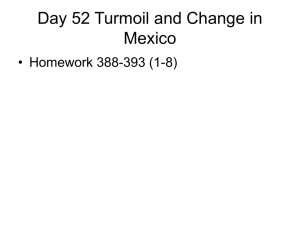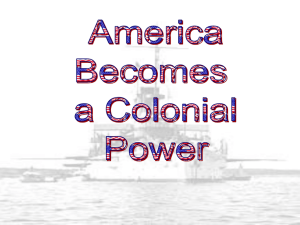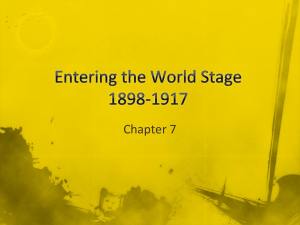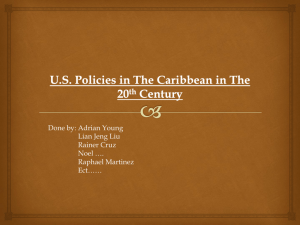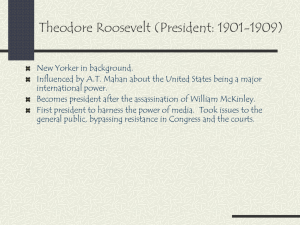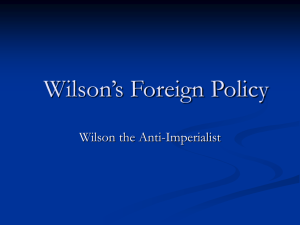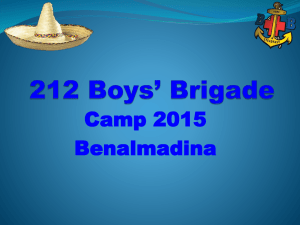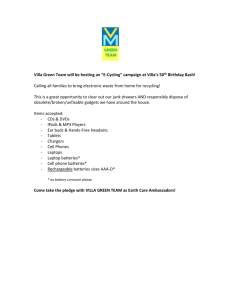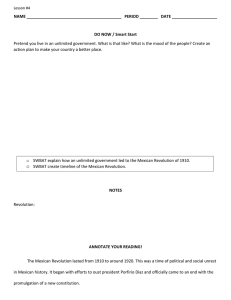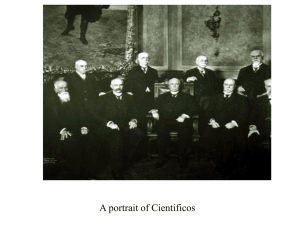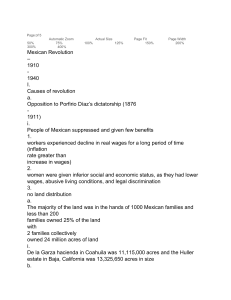Ch 11: The Age of Imperialism Sec 4: Imperialism in Latin America
advertisement
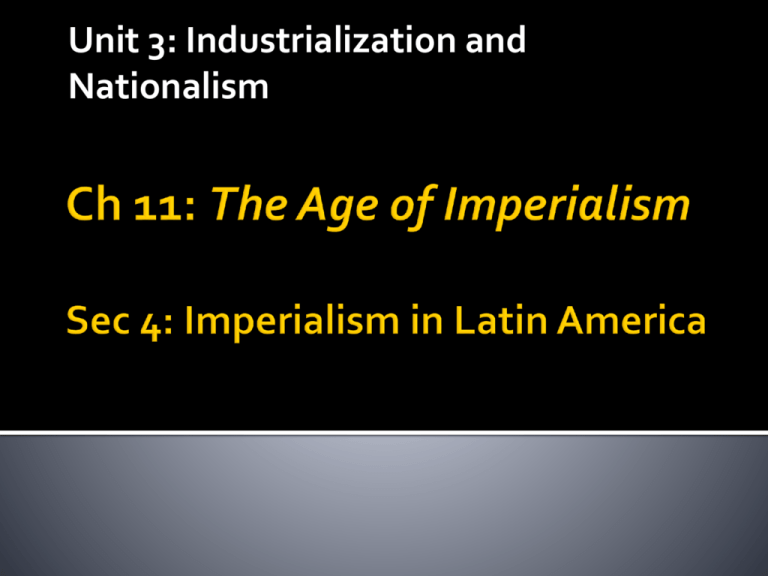
Unit 3: Industrialization and Nationalism Early Conflicts Independence from Spain – 1821 Under rule of Antonio de Santa Anna (1833-1855) Benito Juarez came to power & tried to reform economy, 1855 Led to civil war (1858-1861) Second Mexican Empire, 1864-1867 1861 – French Emperor Napoleon III est. puppet govt. under Maximilian (Austrian Archduke) Maximilian executed after French withdrew troops Mexico re-established republic under B.Juarez Juarez died & Porfirio Diaz took over Est. dictatorship that favored wealthy Imprisoned opponent- reformer Francisco Madero Madero released, fled to US, and starts rebellion Supported by Pancho Villa & Emilio Zapata, who led raids against Diaz govt. Madero elected president in 1912 but soon overthrown by army (Gen. Victoriano Huerta) Both Villa & Zapata attacked Huerta’s army in protest U.S. Marines sent to restore order in 1912 Venustiano Carranza 1914: Huerta resigns / Venustiano Carranza became new president U.S. recognized Carranza govt. but Villa & Zapata start another civil war Villa attacks Texas towns to discourage U.S. US Army chases Villa back into Mexico but fail to catch him Villa agrees to stop attacks by 1920 1917- Carranza works to reform Mexico but unable to lead them out of poverty 1860s – Cuba fought for independence from Spain Spain exiled revolutionary leaders Jose Marti inspires Cuban revolutionaries from NYC 1895- Marti founds Cuban Revolutionary Party, returns to Cuba, joins uprising against Spanish Spain overreact; tries to crush rebellion, killing Marti Spanish Gen. Valeriano “Butcher” Weyler est. concentration camps & commits atrocities U.S. sympathy for Cuba Seen as “freedom fighters” Power of press – yellow journalism “Remember the Maine” Feb. 1898 – USS Maine explodes in Havana Harbor Papers blame Spanish espionage “A Splendid Little War” U.S. easily defeated Spain in Cuba & Philippines in less than 3 months U.S. acquires Puerto Rico, Guam, & Philippines in treaty; Cuba becomes U.S. protectorate (Platt Amendment) Filipinos, led by Emilio Aguinaldo, rebel against U.S. imperialism Believed they would be independent after Spanish control Over 200,000 Filipinos killed! ; Revolt failed U.S. controls Philippines till 1935 1880s–French began construction; bogged down U.S. bought land in 1903 but Colombia (in control over Panama) refused to let U.S. build Pres. T. Roosevelt encouraged revolution to overthrow Colombian govt. & make Panama independent country Revolution successful & U.S. given permission to continue with canal Completed in 1914 (made trip from CA to NY 8,000 mi. shorter) The U.S. Warns Europe 1823 – Monroe Doctrine issued declaring the Americas to be off limits to Europe By late 1800s, Europe economically involved in Latin America T.R. developed Roosevelt Corollary to Monroe Doctrine; U.S. would use military force to keep Europe out The U.S. Intervenes in Latin American Affairs US will send troops several times in 1900s to keep stability in area Haiti, Dominican Republic, Nicaragua, & Cuba Took over control of these nations’ finances to keep Europe out & “prevent financial chaos”
